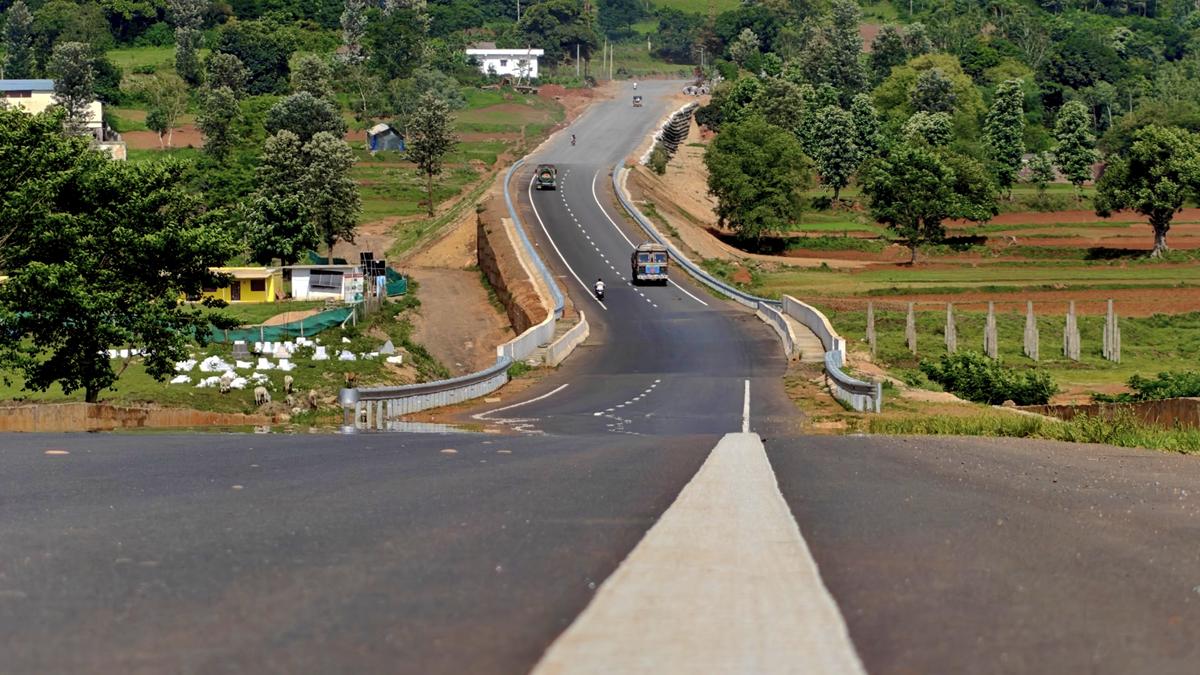By Rajiv Kumar Kuntal
Copyright thehindubusinessline

India’s Q1 FY 2025–26 GDP growth estimate of 7.8 per cent has sparked both celebration and scepticism. While the headline figure positions India as the world’s fastest-growing major economy, a deeper dive into sectoral GVA trends, deflator anomalies, and fiscal dynamics reveals a more nuanced picture, one that demands critical reassessment. Taken together, they suggest the headline is directionally right, the economy is expanding, but likely overstated at the margin.
A detailed examination of key data points — specifically, Gross Value Added (GVA) estimates, GDP deflator dynamics, other related sectors like electricity generation, exports etc. and government spending trends — seem to suggest that the underlying growth momentum, while strong, may not be as explosive as the headline number suggests.
Solid but mixed signals
The standout sectors driving the 7.8 per cent GDP growth were services, manufacturing, construction, though the strength varies. Services, which account for around 60 per cent of GDP, posted an impressive 9.3 per cent expansion on the back of finance, real estate, transport, and government services. However, this figure may be somewhat overstated, as services inflation data is sparse and deflators often default to manufacturing proxies, limiting accuracy. Manufacturing reported 7.7 per cent YoY growth, reflecting resilient urban demand, but industrial production data suggests moderation: IIP witnessed 2.7 per cent growth in April 2025, which dipped to 1.2 per cent in May 2025, picking up to 1.5 per cent in June 2025. Merchandise exports growth remained weak, achieving a growth of 1.92 per cent YoY over the same quarter in FY 2025-26. Exports are likely to face stronger headwinds in light of the tariff escalation announced by the US.
Construction expanded 7.6 per cent, powered primarily by government infrastructure spending, underscoring the public sector’s continued central role in sustaining economic activity. Central Government capex grew by 52 per cent YoY in Q1 FY 2025-26, reaching ₹2.75 trillion, which is almost 25 per cent of the annual FY 2025-26 target (Controller General of Accounts, Department of Expenditure, Ministry of Finance). Agriculture contributed a modest 3.7 per cent rise, supported by favourable monsoons.
Cracks in the narrative
Industrial momentum weakened, with IIP growth easing from 2.7 per cent in April to 1.2 per cent in May and 1.5 per cent in June, raising questions about its alignment with the reported 7.7 per cent manufacturing GVA growth. The slowdown is corroborated by electricity consumption trends, a proxy for industrial activity, which rose only 1.4 per cent YoY in H1 2025 (IEA), well below previous years. Together, weaker IIP and power demand suggest caution in reading the manufacturing sector GVA at face value.
Trade data also highlighted underlying stress: despite overall exports growing by 6 per cent YoY to reach $210 billion in Q1 FY 2025-26, merchandise goods exports were largely flat (1.9 per cent YoY growth) and the goods trade deficit widened to $67 billion in April-June 2025 from $62 billion in April-June 2024.
Meanwhile, inflation collapsed, with CPI easing to 1.7 per cent in June and WPI slipping into negative territory, pulling the GDP deflator down to just 1 per cent, far below its historical 3-5 per cent range. This unusually low deflator mechanically boosted real growth, inflating activity estimates without a commensurate pickup in volumes.
Put simply, some of the “growth” is maybe more statistical than real.
The deflator dilemma
At the heart of the current debate is the GDP deflator — India’s primary statistical instrument for removing price effects to estimate “real” growth. By design, the official methodology blends roughly 60 per cent Wholesale Price Index (WPI) and 40 per cent Consumer Price Index (CPI). This approach creates blind spots: the WPI, while useful for capturing commodity and manufacturing trends, excludes services altogether, while CPI coverage of services is narrow and often under-measured. The result is that service-sector deflators frequently default to proxies drawn from manufacturing or commodity baskets, which risks overstating real activity when goods inflation is unusually soft.
In the first quarter of FY 2025-26, this issue was magnified as the deflator sank to its lowest in nearly six years, just 0.9 per cent, thanks to falling commodity prices, negative wholesale inflation, and flat input costs in manufacturing. With nominal growth at 8.8 per cent, this unusually low deflator automatically inflated real GDP to 7.8 per cent. The result: manufacturing appeared far stronger than industrial output data like the IIP would suggest; while services, where price tracking is patchy, enjoyed an outsized gain. It’s a reminder that growth headlines can sometimes be more about statistical quirks than genuine economic momentum.
The fiscal cushion
The final piece of the puzzle is government expenditure. While private consumption growth has been decent at 7 per cent, a key driver of the Q1 FY 2025-26 growth has been the significant jump in Government Final Consumption Expenditure (GFCE). The nominal growth rate of GFCE was a staggering 9.7 per cent in Q1 FY 2025-26, more than double the growth of 4 per cent in Q1 FY2024-25. This suggests that a substantial portion of the growth impetus is coming from public consumption spending rather than a broad-based revival in private consumption, which is often a more sustainable driver of long-term economic expansion.
The government’s continued focus on capital expenditure, evidenced by a 7.8 per cent growth in GFCF, is a positive sign for future productive capacity. Recent trends indicate public sector GFCF expansion has driven India’s total GFCF growth since FY 2022. Private capex growth has remained subdued or even contracted in some years.
India’s Q1 FY 2025-26 GDP growth is commendable, demonstrating resilience amid global uncertainty and tariff shocks. Yet, the exuberance of 7.8 per cent risks obscuring underlying realities. The growth is real but inflated by price measurement complexities and government spending.
For economists and policymakers, the imperative is clear: focus on improving inflation deflators for the services sector, and refine high-frequency economic indicators to check if these are in sync with aggregate growth numbers. Investors and businesses should calibrate expectations accordingly; India’s economy is accelerating steadily but is not yet sprinting. Understanding these nuances is necessary for crafting fiscal and monetary policy calibrated to actual economic conditions.
Kumar is Chairman, and Karkun is a Senior Fellow, Pahle India Foundation
Published on September 17, 2025



